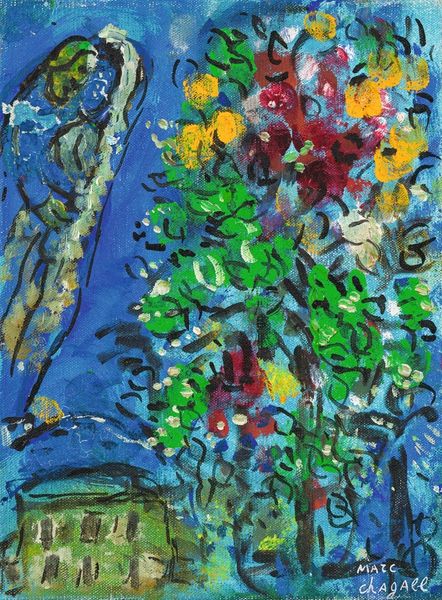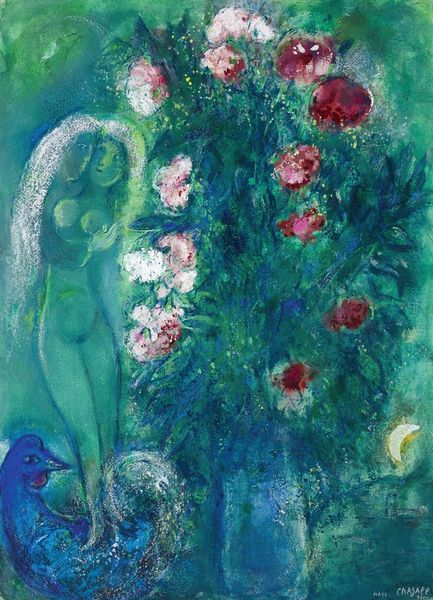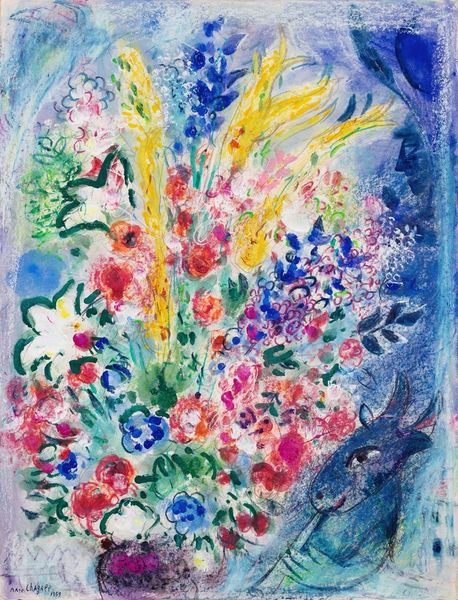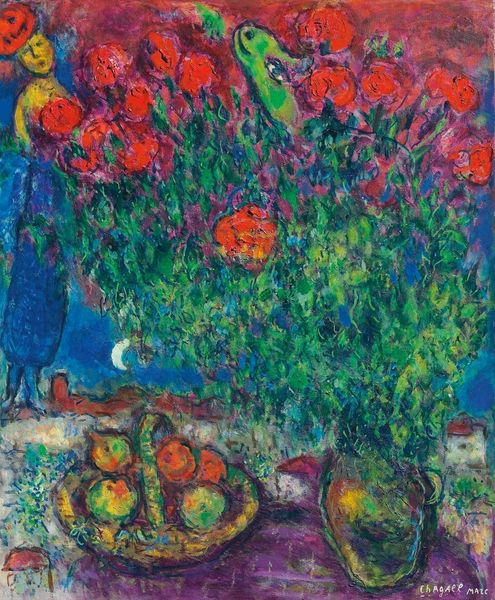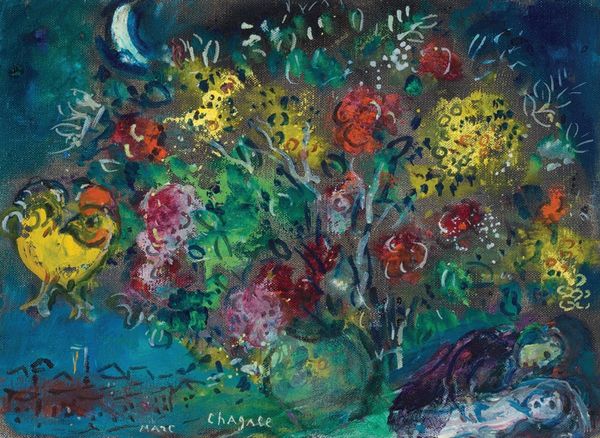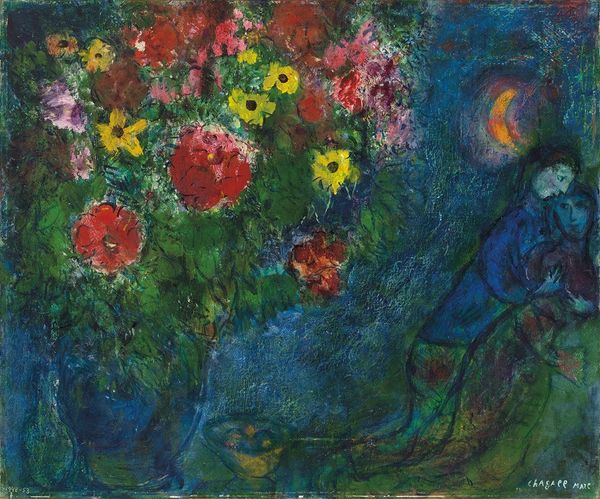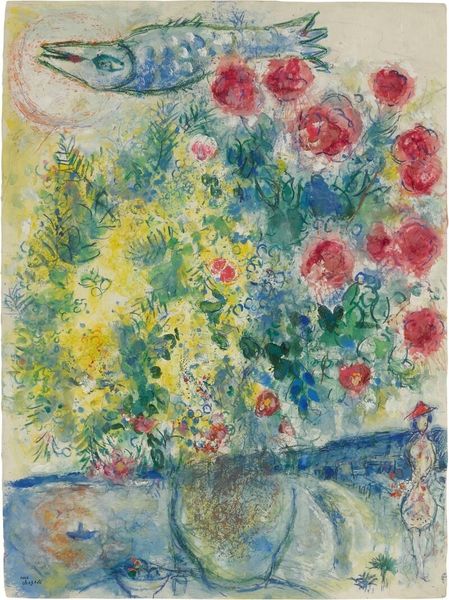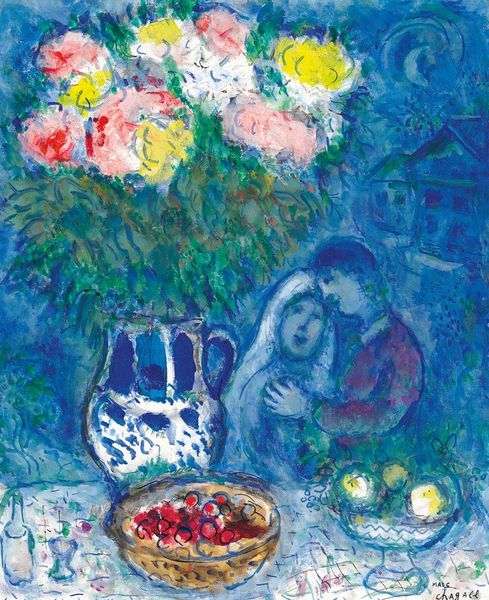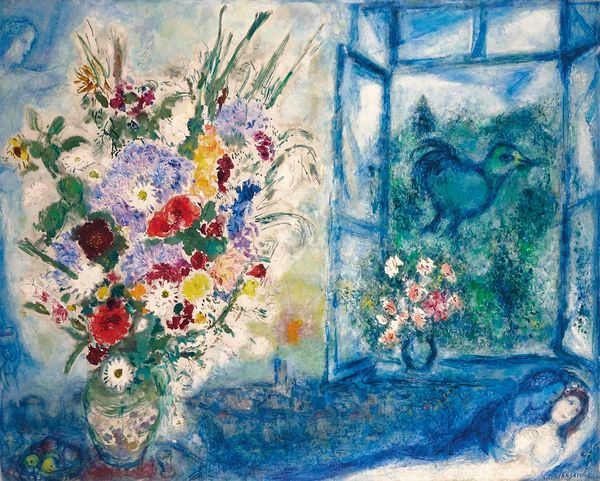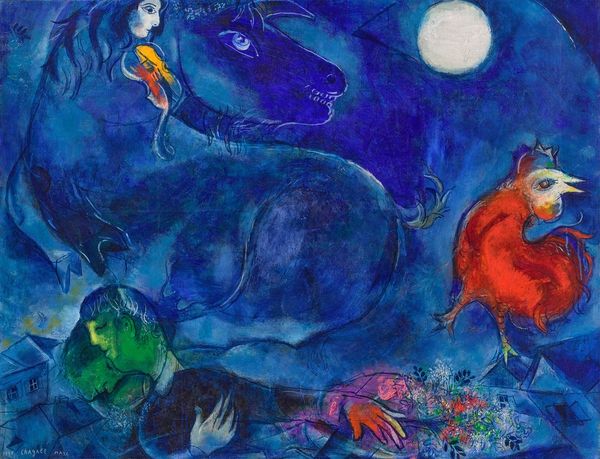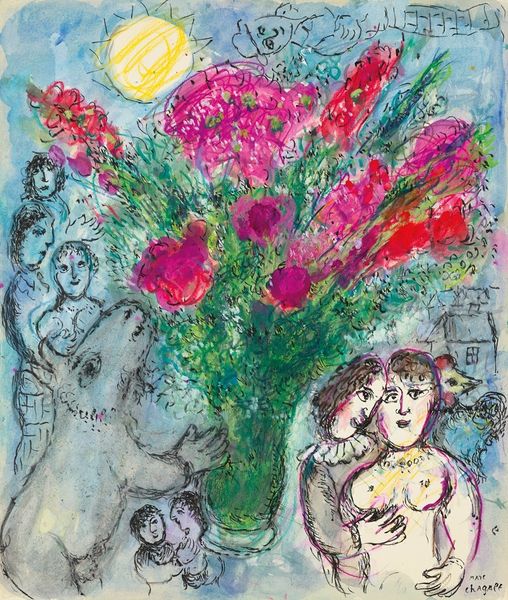
Copyright: Modern Artists: Artvee
Editor: So, this is Marc Chagall’s "Les amoureux au clair de lune," created in 1948. It looks like a watercolor painting. The mood is dreamy, kind of floating. There are so many recognizable shapes, but the composition feels abstract and a little disorienting. What do you see in this piece? Curator: Immediately, I notice the persistent imagery of the Madonna and Child. The symbolic weight of that pairing is profound, connecting to centuries of artistic and cultural memory. But it’s not merely religious; it’s deeply personal, evocative of universal themes of love, protection, and origins. Editor: That makes sense. I guess I was focused on the fruit bowl and the overall fantasy vibe. Curator: Look at how Chagall places the moon, almost as a halo, directly above the maternal image. The moon, itself a potent symbol of cyclical change and feminine energy, amplifies the emotional core of the painting. Consider the blossoming flora as well—growth, renewal, the constant cycle of life… Do you think he is drawing specifically from one culture or belief system? Editor: Probably not one specifically? It feels like he's layering symbols from many places. Curator: Precisely! And how does that layering, that superimposition, speak to a sense of displacement, perhaps reflecting the tumultuous times during which he created this work? Editor: That’s fascinating. I hadn’t thought about it in the context of that era. Curator: Chagall invites us to decode not just individual symbols but their interactions, their collective resonance. Ultimately, "Les amoureux au clair de lune" reflects shared humanity through visual metaphor. Editor: I’ll definitely look at Chagall differently now! It’s not just pretty colors, there’s real depth.
Comments
No comments
Be the first to comment and join the conversation on the ultimate creative platform.
